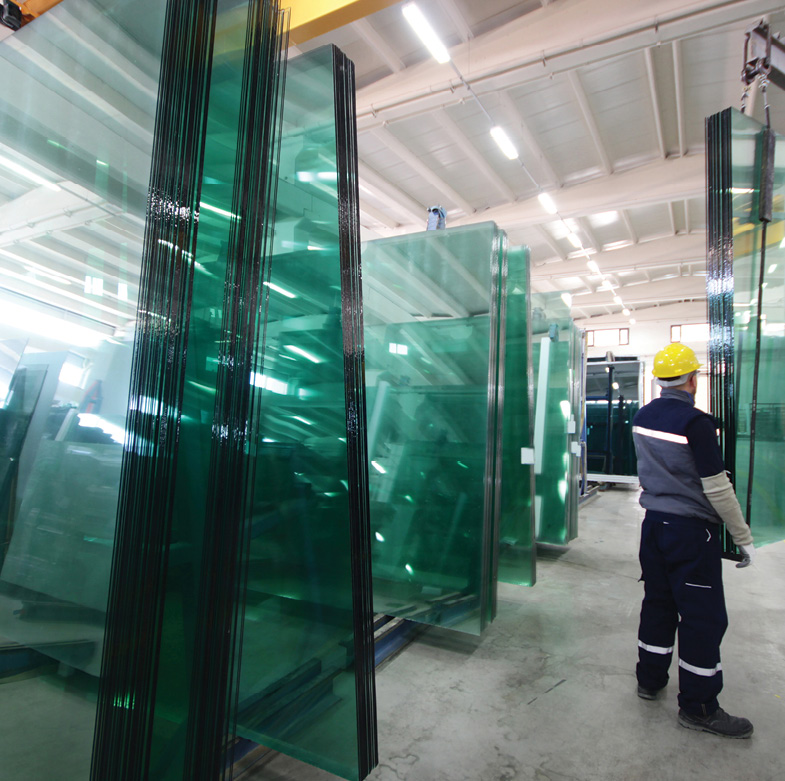Keeping Up with the March of Progress
As tradeshow season approaches, it’s a good time to evaluate your strategies to ensure ongoing success

The Bottom Line: Despite economic uncertainties, the glass and glazing industry is progressing, with fabricators focusing on larger glass formats, energy efficiency and strategic automation to meet new demands and enhance productivity.
Earlier this month, I was revisiting the 2024 Top Glass Fabricators Report, which always proves a rich resource in keeping up with the trends that shape the commercial glass and glazing industry.
My biggest takeaway from the report is this: progress. Even among the clouds of uncertainty that have developed in relation to inflation, project delays and cost increases, our industry continues to march forward, delivering on new demands with the kind of ingenuity that makes me feel proud to be a part of the industry.
And for fabricators, keeping up with such progress requires the right investments, both in your product technology and your manufacturing processes. The fall season—with major tradeshows taking place throughout North America and Europe—is always an opportune time to evaluate your strategies. As you do this, here are a few things worth considering.
Size and performance: Striking the balance
Larger glass formats are on the upswing and don’t appear to be slowing down. In the 2024 Top Glass Fabricators Report, 86% of respondents expect sizes to continue to grow in 2024, up seven points from last year. Elsewhere, respondents reported several other high-priority technology trends, including bird-friendly glazing, security and impact performance, and energy efficiency.
The demand for larger glass in commercial settings is easy to understand; studies have shown that natural light can enhance workplace productivity, as well as occupant comfort and health. A good view, combined with natural lighting, connects humans within the building to nature outside. Simultaneously, we know that building codes the world over are demanding more energy efficiency from glass and glazing. Fabricators looking to capitalize on these demands must strike a careful balance—and it can be a challenge.
One solution is to fully evaluate your spacer technology and vet your available options for such applications. Metal spacers might seem like a logical choice, offering the strength to support a larger format. But metallic spacers more readily transmit heat and cold than nonmetallic and can leave you wanting for optimal thermal efficiency numbers. Warm-edge spacer technology, by contrast, has demonstrated high levels of energy performance and should be considered. Just make sure you’re evaluating options that are properly rated for demanding commercial applications and provide the necessary levels of structural support required, along with the energy benefits.
Strategically applying automation
The 2024 Top Glass Fabricators Report further shows that investment in manufacturing equipment continues, as fabricators seek to optimize their outputs with the right equipment and strategies. I touched on these figures in my column “Leveraging Available Technologies for Today’s Challenges” for the August issue, but it’s worth revisiting. While more than half of respondents said they planned to automate in the coming year, those reports are down year over year.
For fabricators on the fence about automation, I think it’s worth continued examination of the technology’s benefits, especially with the opportunity to see some of these machines in action at this season’s tradeshows. A decade ago, the primary reason to automate was to amplify production figures. But for fabricators whose business might not rely on high-volume production, the benefits may not have been so apparent.
Today, though, automated equipment has demonstrated its capacity to deliver benefits beyond volume. Automation can help you realize improved quality and elevated consistency in your production. It can help ease the labor squeeze, requiring less manpower to carry out critical production tasks. It can even elevate safety by reducing human touchpoints.
A good strategy for any manufacturer is to automate where it makes sense. You can make the biggest impact by analyzing the specifics of your operation, your teams’ skills and your most pressing needs.
For example, if your teams have no problems cutting glass manually while keeping up with your target production volume, it may not necessarily benefit you to automate that process.
Other parts of production may represent a better opportunity. Consider spacer application for insulating glass units, which require high levels of precision to avoid potential quality errors. Precision is key here, and it’s where automation shines—many IGU quality concerns stem from improper manual spacer application.
How are you approaching the march of progress in our industry? How are you keeping up with changing demands in the commercial space? And how are you going to deliver? I look forward to discussing these issues with customers, partners and stakeholders at this season’s tradeshows.


